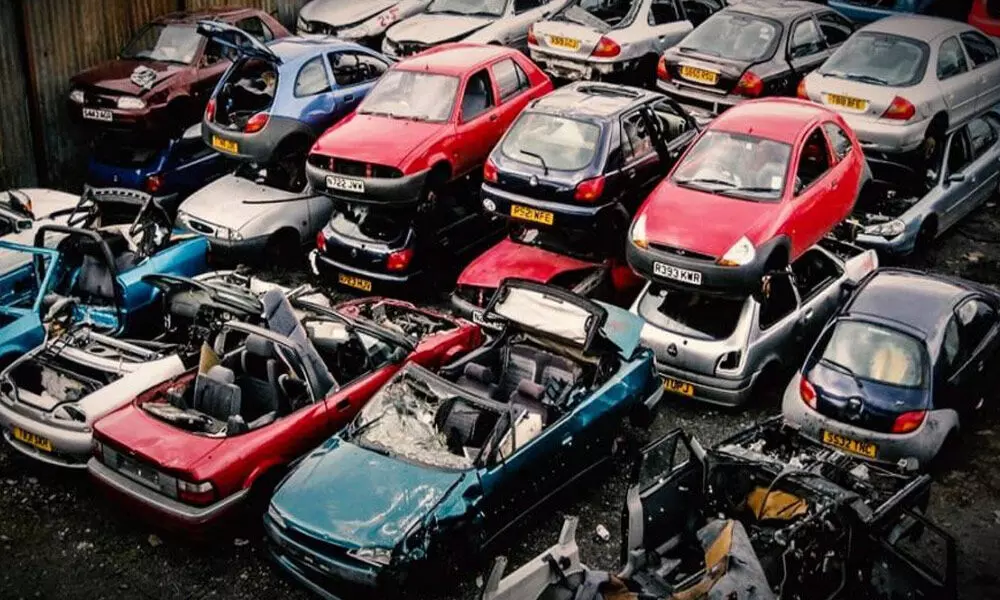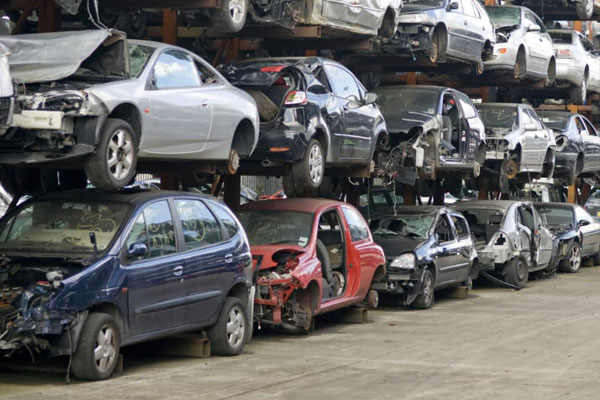The morning heat rises off the asphalt as I watch a worn-out scrap car Singapore dealer methodically dismantle what was once someone’s prized possession. The skeleton of a once-gleaming sedan lies partially dismembered in the yard, its components categorised with surprising precision. In the distance, Singapore’s iconic skyline shimmers—a testament to the city-state’s remarkable efficiency. Here, at the margins, that same efficiency transforms end-of-life vehicles into resources with surgical precision.
The Last Journey: Where Cars Go to Die
Wong Lee, a second-generation scrapper with weathered hands and eyes that miss nothing of value, speaks of his work with unexpected poetry.
“Every car tells a story,” he says, running his hand along a dented door panel. “Some come to us after accidents, others from owners who simply cannot afford to renew their COEs. But all of them hold value—in their metals, their components, their history.”
The Certificate of Entitlement (COE) system shapes vehicle ownership in Singapore unlike anywhere else in the world:
- COEs typically last 10 years, after which renewal costs often exceed the vehicle’s value
- The average lifespan of a Singapore vehicle is just 10-15 years, compared to 20+ in many countries
- Nearly 20,000 vehicles reach their end-of-life in Singapore annually
- Almost 95% of a vehicle’s components can be recycled or repurposed
“In Singapore, cars are not just transportation; they’re significant financial investments with predetermined lifespans,” explains Dr. Tan Wei Ming, transportation economist at Nanyang Technological University. “This creates a uniquely Singaporean relationship with vehicles—one of temporary stewardship rather than indefinite ownership.”
The Intimate Economics of Letting Go
At a coffee shop near the scrapyard, I meet Mdm. Lim, a 67-year-old retired teacher who has just surrendered her 10-year-old hatchback. The process seems to carry emotional weight beyond the transaction.
“That car took my children to university, carried my husband to his treatments during his illness, and gave me independence in my early retirement,” she says, stirring her kopi-o. “But the renewal costs were more than my monthly pension. What choice did I have?”
The financial calculations are sobering:
- COE renewal can cost upwards of S$50,000 for certain vehicle categories
- PARF (Preferential Additional Registration Fee) rebates decrease significantly as vehicles age
- Maintenance costs increase exponentially after the 7-year mark
- For many, the decision to scrap is less about choice and more about financial necessity
“The system creates a peculiar moment of reckoning,” observes social researcher Imran Hashim. “Singaporeans must confront the true cost of their mobility in a way few other societies demand.”
The Environmental Paradox
Behind the scrapyard’s main office, parts are sorted with remarkable precision. Catalytic converters—rich in platinum, palladium, and rhodium—are carefully removed. Engines are drained of fluids. Usable components are tested and catalogued.
The environmental implications create a fascinating contradiction:
- Singapore’s mandatory scrapping prevents older, more polluting vehicles from remaining on roads
- The controlled recycling process captures up to 95% of vehicle materials
- Yet the premature end-of-life cycle means higher manufacturing demands globally
- The environmental cost of building a new car equals driving it for 100,000 kilometres
“We’ve created one of the world’s most environmentally sound vehicle disposal systems,” says environmental engineer Dr. Chua Mei Lin. “But the question remains: is it more sustainable to extend vehicle lifespans with stricter emissions testing rather than requiring replacement?”
The Hidden Human Ecosystem
What strikes me most is the human ecosystem that has developed around this vehicle afterlife economy. At the edges of the industrial zone, I find:
- Workers specialising in salvaging specific components—one man has spent two decades doing nothing but recovering airbag systems
- Families whose livelihoods have depended on the scrap industry for generations
- Immigrants who have found economic footholds in this labour-intensive sector
- Hobbyists who haunt these yards looking for rare parts for passion projects
Ahmed, a Bangladeshi worker who has spent 15 years in Singapore’s vehicle recycling industry, defies the stereotype of unskilled labour. I watch him carefully extract a complex electronic module, his movements displaying the confident precision of an experienced surgeon.
“In my village, they would throw away the entire car,” he tells me. “Here, I have learned to find value in every piece. Nothing is truly worthless if you understand what you’re looking at.”
The Ritual of Surrender
For many Singaporeans, the vehicle scrapping process has become a modern ritual of surrender—a moment when the practicalities of the system confront emotional attachment.
“I’ve seen customers take photographs with their vehicles before handing over the keys,” says a transport authority representative who requests anonymity. “Some remove personal items with surprising ceremony. Others simply can’t bear to watch and send family members in their place.”
This relationship with material possession reflects broader tensions in Singaporean society—between pragmatism and sentiment, between efficiency and attachment, between regulatory compliance and personal choice.
Conclusion
As I leave the scrapyard, the juxtaposition is striking—gleaming new cars stream past on the adjacent expressway, most destined to follow the same predetermined lifecycle. The system’s efficiency impresses even as its emotional consequences give pause. In a nation where pragmatism often trumps sentiment, the end-of-life vehicle process perfectly encapsulates Singapore’s distinctive approach to resource management—systematic, thorough, and ultimately unsentimental. For those seeking to understand both the practical requirements and the human experience behind the process, there’s much to consider when the time comes to contact a scrap car Singapore service.


